William Clark & Iron Puddlers

William CLARK (1852-1902), our Great Great Grandfather, worked as an Iron Puddler in the iron foundries of England and Scotland during the Second Industrial Revolution. Born in the small village of Seaton in Cumberland, William was the second child of nine, raised by parents Jane DREWERY and Joseph CLARK, a farm labourer and husbandman. The village economy had transitioned over the previous century from agricultural to industrial with the introduction of mining, railways, and iron production.

All five of William’s brothers became coal miners in Workington, however he chose a different path, starting work as an Iron Puddler. Probably at North Western Hematite Steel Works as their home, North Side Cottages, were in the shadow of the Steel Works.
The ready availability of coal, iron ore and limestone gave rise to several iron and steel works on the Cumberland coast. The low phosphorus content of the iron ore was highly suitable for use in the Bessemer converter – a means of producing a higher grade of steel. By the 1870s, most of Workington’s ironworks had converted to this process.
An iron puddler was a worker in iron manufacturing who specialized in puddling, an improved process to convert pig iron into wrought iron with the use of a reverberatory furnace. Working as a two-man crew, a puddler and helper could produce around 1.5 tons of iron in a 12-hour shift. The strenuous labor, heat and fumes caused puddlers to have a short life expectancy, with most dying in their thirties. Puddling was never automated because the puddler had to sense when the balls had “come to nature.”
Iron Puddler, Wikipedia
The mines, ironworks, and docks were linked by a network of railways that transported the coal and steel to other parts of the country and overseas via the West Coast ports. As you will note from the photograph below, William grew up between the tracks and the iron works!
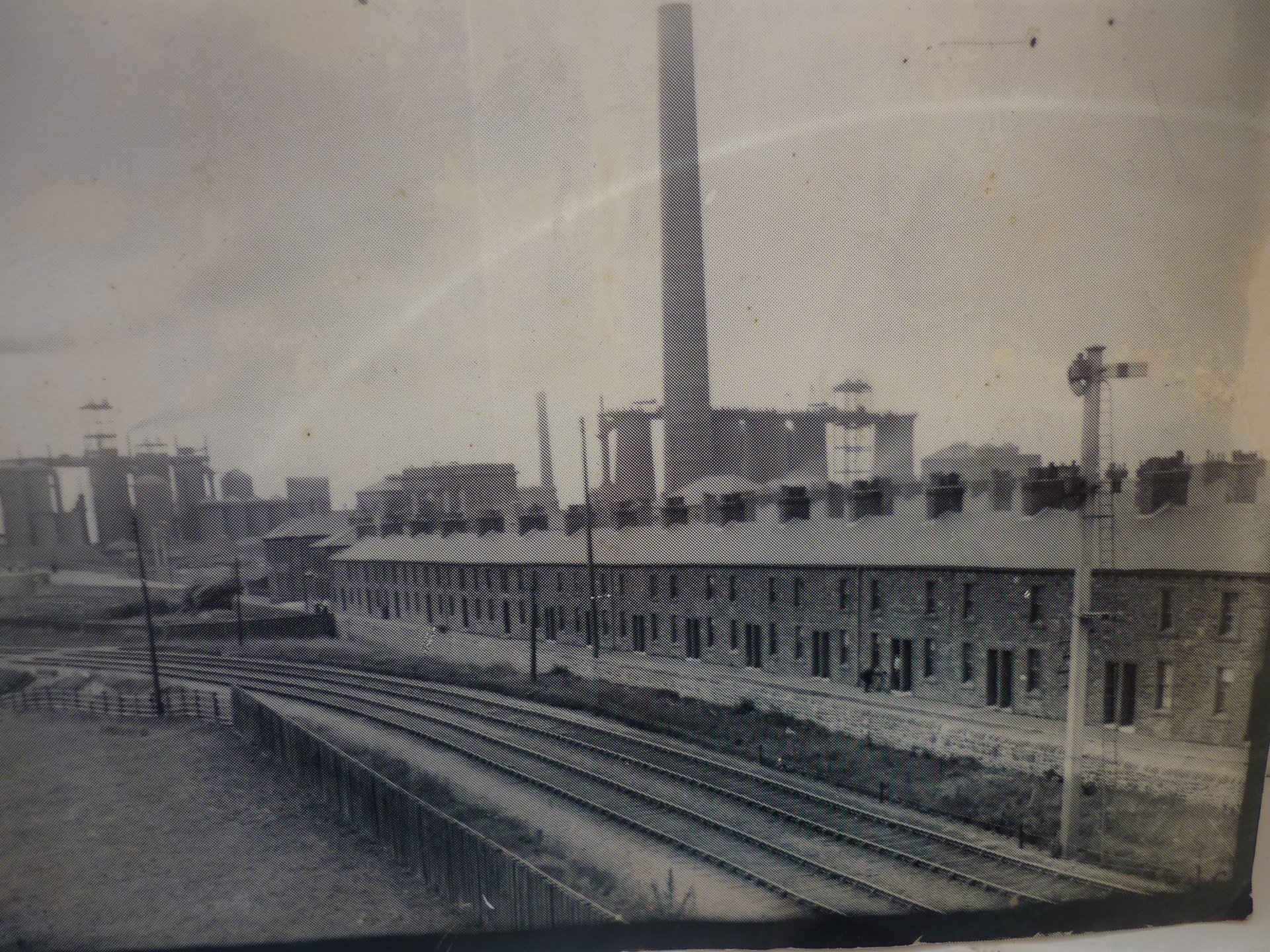

Cumberland LIII.7 Revised: 1898, Published: 1900, NLS.uk
Iron Puddlers depended upon muscle power alone to manipulate the materials upon which they worked. Despite being surrounded by the steam powered machines, like steam hammers and rolling mills, puddlers worked with a few hand-held tools at a hearth which had barely changed in a century. They still loaded 2 tonnes of pig iron per shift into a hearth, manipulated 200lb, molten or viscous metal, with nothing more than hand tools, and then dragged that radiant mass of refined iron from the hearth without mechanical aid of any sort. Back injuries were common and puddlers frequently suffered eye problems from staring into the blazing furnace.
The puddler was assisted by a single underhand (helper), working 12 hour shifts, to allow for greater utilization of the iron works during the round-the-clock operations. The puddlers were the constraining factor between the pig iron production and end process of the rolling mill to deliver malleable iron. The iron works expanded puddling capacity with up to a dozen puddling furnaces, employing 40-50 puddlers and helpers. The step by step process is broken down in the following article: Puddlers, Shinglers, & Rollers: The Story of Malleable Iron.
William married Ann BOWNESS (1855-1928) February 1876 in Camerton, the neighbouring village to Seaton, where Ann had been raised by her grandparents. The couple did not settle long in Cumberland but instead relocated with two daughters and Ann’s orphaned half-brother, John Ismay, to Ince-in-Makerfield, a suburb of Wigan, Lancashire. William worked as an iron puddler at the iron rolling mills alongside John Ismay, who was employed as an iron works labourer at age 13.
The migrant population of iron and steel workers would follow employment as new foundries opened or foundries re-tooled with additional furnace capacity.
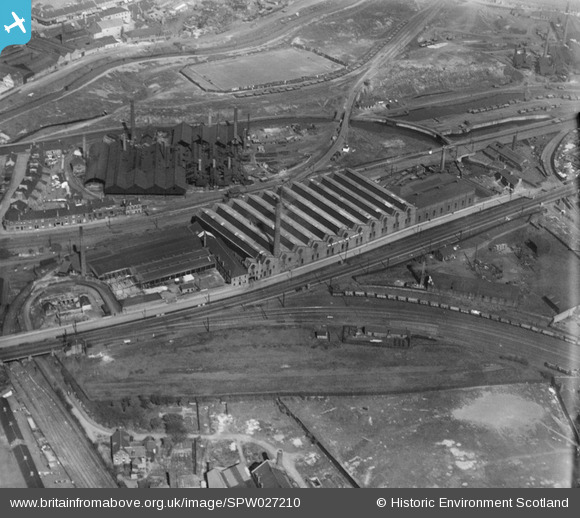
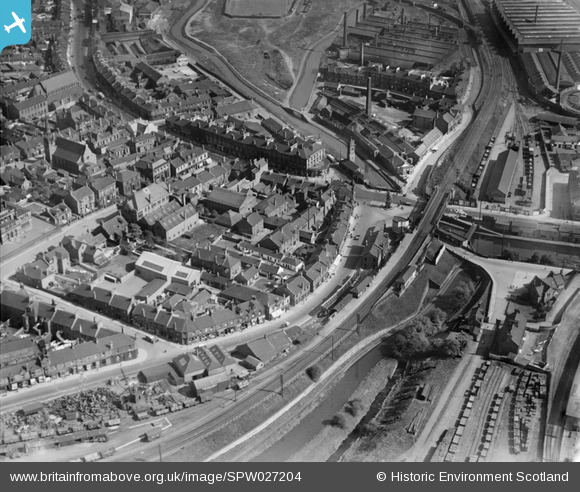
Two more children were born in Lancashire before William moved with his wife and four children to Scotland. The Clark family spent a decade in Coatbridge, Lanarkshire, from 1888-1897. Three more children were born including our Great Grandfather, George CLARK (1890-1983). As William turned 40 years of age he was supporting his wife and seven children, living in cramped employee housing in the North British Buildings on Whittington Street, next to his employer North British Iron Works.
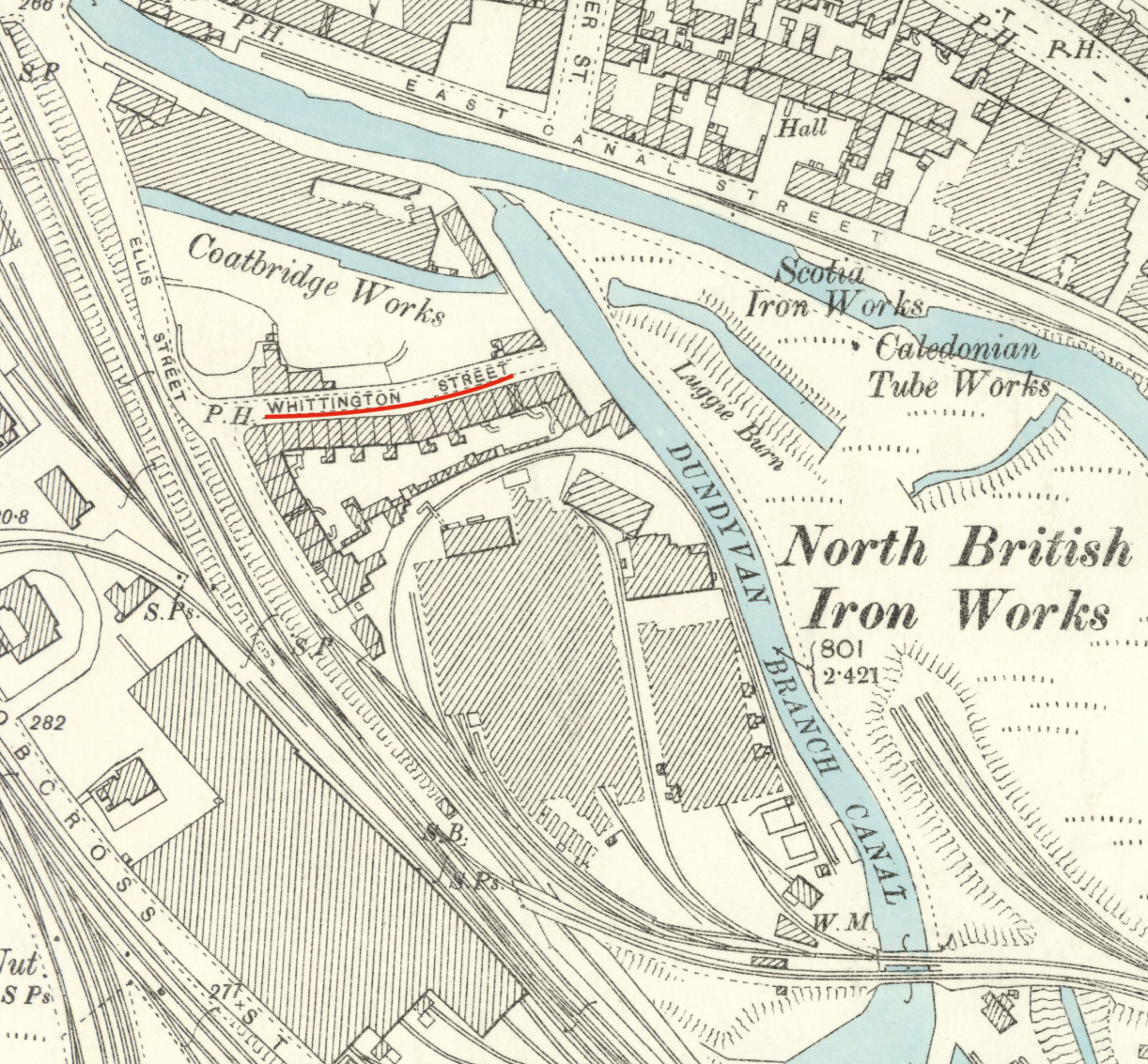
The ironworks had expanded rapidly in Coatbridge through the 19th century, drawing skilled and unskilled workers from the Scottish Highlands, from Ireland, England and Wales. Low-skilled workers and their families were housed in single-storey, single room houses ranged in rows or multi-storey tenements like William and his family. Conditions were very poor, especially for the lowest-paid workers who had to share a water pump among many families and a shared outside ‘privy’ that had no plumbing and was simply emptied into a pit. The houses were built right next to the works, often in the middle of nowhere, with no local services. Coatbridge had reached a tipping point.
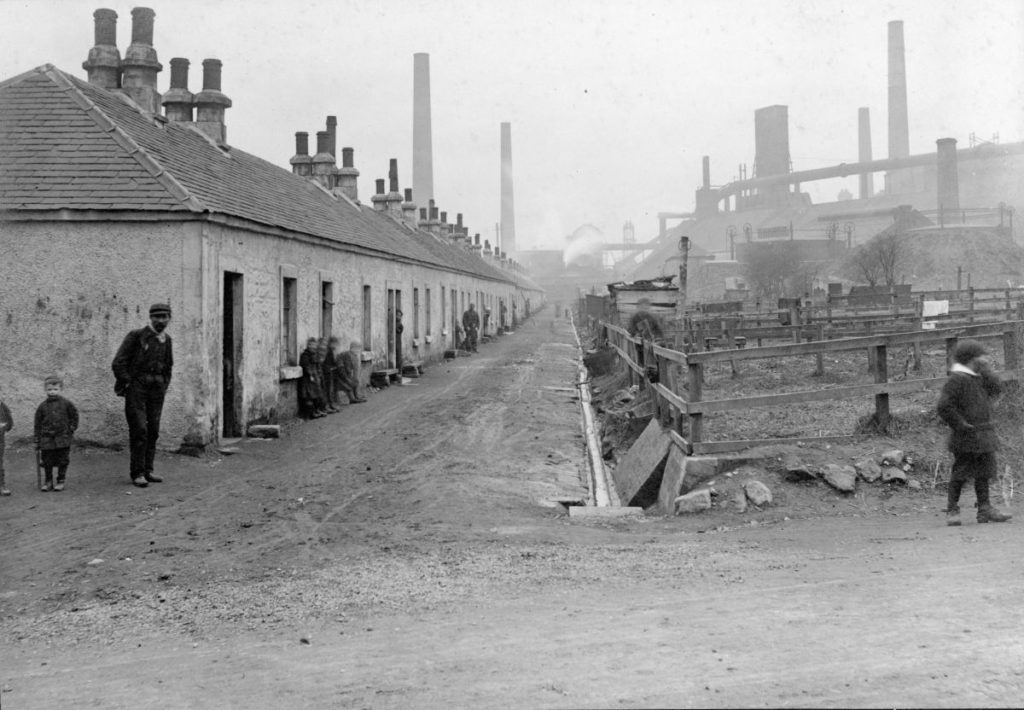
The three elder children reached adulthood in Scotland. The eldest daughter Mary Jane ‘Jeanie’ married in Lanarkshire and settled in Glasgow before emigrating in the 1930’s to Montreal, Quebec, where their two sons had emigrated previously. The second daughter Elizabeth married a butcher and settled in West Kilbride, Ayrshire. The third child, and eldest son, Joseph Scarfe Clark, returned to the place of his birth in Ince-in-Makerfield, Lancashire, to work in the coal mines, marry, and raise a daughter.
The ironworks had passed through multiple owners during their decade in Coatbridge and finally went bankrupt in 1897. This was most likely the trigger for the family to return with their four youngest children to Workington. The family settled in Henry Street and welcomed the birth of their youngest son, Albert Wear Clark, in December 1898.
Exceeding the life expectancy of the average iron puddler, William CLARK worked over 30 years in iron foundries and steelworks, before he died at the age of 50 in 1902. Widowed at 47, with four children still school age, Ann remained in Workington. Her son Daniel had been laboring at the steelworks since he was 14, and was the sole earner by age 16, after his father’s death.
Once the youngest children were older and able to contribute to the household, Ann returned to Coatbridge. All five of the youngest children are listed with Ann in Coatbridge in the 1911 Scottish Census.
Daniel found employment at the steel works, and following in his father’s footsteps, our Great Grandfather George CLARK, became an Iron Puddler. Meanwhile his sister Annie went into domestic service in Airdrie.

By the outbreak of World War I only five ironworks remained open in Coatbridge. With the collapse of iron working and dwindling jobs, the family relocated once more, this time to Darlington, County Durham, arriving just before the outbreak of war. The Rise Carr steel rolling mills, iron foundries, and London North Eastern Railway (LNER) offered more employment opportunities.
As the children married, the family moved to new properties, but usually within shouting distance of one another. Eldon Street and Hammer Street housing multiple generations of the Clark family. Our great aunt Alice AG Clark remembers visiting her grandmother, Ann BOWNESS, aunts and uncles and cousins just a couple of doors down from each other.

32 Hammer Street (~1915)
- Ann BOWNESS (2GG)
- George CLARK & Annie WANDLESS (GG)
- Alice AG Clark
- Albert Wear CLARK (Grandfather)
- Annie Bowness Clark
- George Clark
- George CLARK & Annie WANDLESS (GG)
4 Sheraton Street (1918)
- David Sawers Clark & Lucy Charlton
- John William Clark
40 Hammer Street (1928)
- Daniel Clark & Annie Achison Currie Campbell
- Mary Clark
- Annie Bowness Clark
- William Clark
- Daniel Clark Jr
20 Fry Street (1928)
- Ann BOWNESS (2GG)
167 Eldon Street (1939)
- Daniel Clark & Annie Achison Currie Campbell
- Mary Clark
- William Clark
- Daniel Clark Jr
175 Eldon Street (1938)
- George CLARK & Annie WANDLESS (GG)
- Albert Wear CLARK (Grandfather)
- John Wm Clark
- Wilfred Clark
- Alexander Clark
- Joan Clark
104 Brougham Street (1939)
- Albert Wear Clark & Frances M Camp
- Jean Clark
- John Clark
- William Clark
87 Gurney Street (1939)
- Annie Clark & Alexander Smith
Daniel had married in 1911, so brought his wife and daughter to Darlington, took up work at the rolling mill, and raised two daughters and two sons. Annie had also married in Coatbridge in 1913, settled in Darlington, and became a state certified midwife, even delivering her great nephew, Richard Atkinson.
In our direct family line, George CLARK married Annie WANDLESS in Darlington in 1916, continued working as an Iron Puddler, then a Blacksmith’s Striker in the Steel Rolling Mills, and raised eight children, including our grandfather.
David Sawers Clark joined the Seaforth Highlanders Regiment to serve in France, 1914-1918. Private Clark returned to his bride and son in Darlington but succumbed to his wounds shortly thereafter and is buried in Darlington North Cemetery (at top of Rise Carr map above).
The youngest child, Albert Wear Clark, served with the British Army through the 1920’s, married in Stockton-on-Tees, settled in Darlington, and became a trolley bus driver, raising three children. After retirement the couple emigrated to New Zealand to join their daughter Jean, son-in-law Derek, and their grandchildren. We visited Jean & Derek when we stayed in Christchurch in 2006.
Our Great Great Grandmother Ann BOWNESS passed away 14th January 1928 at the great age of 72. Her son, Daniel, was present at her death at 20 Fry Street. The cause of death was listed as chronic bronchitis and senility. The great matriarch of the Clark family had guided her clan through more upheaval than any previous generation, leaving them with the stability to raise many more generations of Clarks in Darlington.
Family Tree
The Clark family line stretches back another two generations in Cumberland beyond our 3rd Great Grandparents (3GG), Joseph CLARK & Jane DREWERY, into the middle of the 18th century. Details are scarce and the surname of Clark does not help the situation!
- 3GG: Joseph CLARK (1820-?) & Jane DREWERY (1828-?)
- John Clark (1850-1913)
- 2GG: William CLARK (1852-1902) & Ann BOWNESS (1855-1928)
- Mary Jane Clark (1873-?)
- Elizabeth Clark (1874-1965)
- Joseph Scarfe Clark (1880-?)
- Daniel Clark (1885-1957)
- Annie Clark (1889-1977)
- GG: George CLARK (1890-1983) & Annie WANDLESS (1897-1969)
- William Clark (1916-1917)
- Alice Anne Grainger Clark (1918-?)
- Annie Bowness Clark (1919-?)
- Grandparents: Albert Wear CLARK (1921-1983) & Sheila Mary HUDSON (1925-2016)
- Our direct line…
- George Clark (1924-1997)
- John William Clark (1925-2004)
- Wilfred Clark (1926-2005)
- Alexander Clark (1930-1998)
- Joan Clark (1935-1977)
- David Sawers Clark (1896-1918)
- Albert Wear Clark (1898-1986)
- Martha Clark (1853-1933)
- Joseph Clark (1856-1918)
- Mary Jane Clark (1858-1934)
- Daniel Clark (1860-1931)
- George Clark (1863-1940)
- Walter Clark (1866-?)
- Elizabeth Ann Clark (1869-1896)
References
- Puddler imagery, Wikimedia
- Second Industrial Revolution, Wikipedia
- Bessemer Process, Wikipedia
- Iron and steel GAZ Workington since c.1850, Cumbria County History Trust
- Seaton Iron Works, Wikipedia
- Visiting Workington History
- Moss Bay Hematite Iron and Steel Company, Wikipedia
- Workington, Cumbria, SteveBulmanF9
- Iron and Steel, Industrial History of Cumbria
- Puddlers, Shinglers & Rollers: the Story of Malleable Iron, North Lanarkshire Council
- Puddling (metallurgy), Wikipedia
- Iron puddler, Wikipedia
- Reverberatory furnace, Wikipedia
- Work and Workloads During Industrialization: The Experience of Forgemen in the British Iron Industry 1750–1850, Chris Evans, International Review of Social History44 (1999), Cambridge.org
- North Side Cottages, Seaton, Cumberland Sheet LIII, Surveyed: 1864, Published: 1867, NLS.uk
- Workington, Cumberland LIII.11, Revised: 1898, Published: 1900, NLS.uk
- Henry Street, Workington, Cumberland LIII.7, Revised: 1898, Published: 1900, NLS.uk
- Stopford Street, Ince-in-Makerfield, Wigan, Lancashire XCIII.8, Surveyed: 1889 to 1892, Published: 1894, NLS.uk
- North British Buildings, Whittington Street, Coatbridge, Lanarkshire VII.12, Revised: 1897, Published: 1898, 25 inch 2nd and later editions, 1892-1949, Ordnance Survey, NLS.uk
- North British Buildings, Whittington Street, Coatbridge, Lanarkshire VII.12, Revised: 1910, Published: 1913, 25 inch 2nd and later editions, 1892-1949, Ordnance Survey, NLS.uk
- The Rise And Progress Of Coatbridge And Surrounding Neighbourhood, Andrew Miller, Dundyvan Iron Works, Glasgow 1864, ScottishMining.co.uk
- Phoenix I – North British I – Globe – Scotia Ironworks, Page 15, Scottish Industrial Story, Volume 7.1, 1984
- The Phoenix and Clifton Ironworks, Coatbridge, probably late 1800s, North Lanarkshire Council
- Rise Carr, Darlington, Durham LV.2, Revised: 1913 to 1914, Published: 1915, NLS.uk
- EAW019720 ENGLAND (1948). The Whessoe Engineering Works and environs, Darlington, 1948, Britain from Above
- Seaforth Highlanders, Line Infantry Regiment, British Army, Wikipedia
5 Responses
- Pingback: Clark’s of Darlington – Haggbridge.com







Julian, thank you for this exceptional account of William Clark and his family. As another of his 2xgreat grandchildren, I had discovered from his census records that he had been an iron puddler, but I didn’t go any farther than learning that an iron puddler worked in a foundry. Clearly, you have opened my eyes to his work environment.
As a family history blogger for my husband’s ancestry, I respect the amount of research you’ve consumed to find the answers, and admire your ability to present it to others in a fascinating, authoritative manner. Photos and maps add so much for us to get a wee sense of how our ancestors lived, especially in a country so different from our own. (Waving to Canadians.)
This has been a refreshing way to start my day. Thank you.
Anita.
Thank you Anita! I started researching these stories during lockdown and realized that this format is more engaging than dates and places on Ancestry.com. It allows me to place our ancestors in the context of the history evolving around them. I really enjoy the process and keep finding interesting stories to tell.
Take care in Canada! Julian